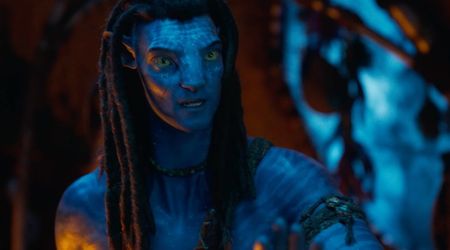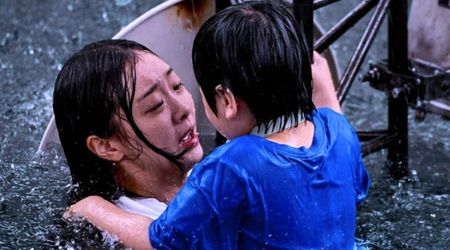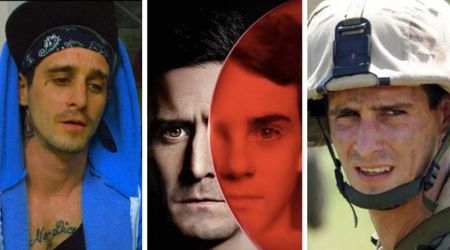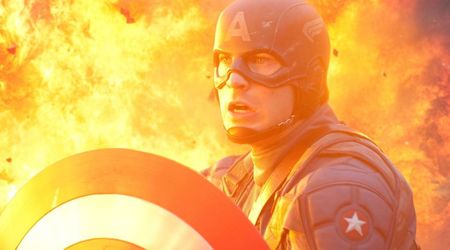'40 Years a Prisoner': Here's how the Philadelphia police propagated brutality against Black community till 1978

In HBO's latest documentary, '40 Years a Prisoner' we see how the Philadelphia Police Department had brutally treated the city's Black residents. One MOVE member, Janine Africa, was pushed while she was holding her baby. The baby perished due to the injuries. During the 1978 standoff, three police officers brutally beat up Delbert Africa, a clip of which was captured by journalists, much to the embarrassment of the police department. But as we see at the beginning of the documentary, the police have long had issues with MOVE, especially because they protested against how the law enforcement in the city treated them.
The city's police's history goes way before the events that led to the standoff. In 1870, a police officer shot a 26-year-old Black man, named Henry Truman, in an alley in Society Hill. At trial, the officer said the shooting is an accident that took place when he was ambushed by a crowd while chasing an accused shoplifter. Witnesses at trial, however, stated that they saw the officer chase Truman into the alley, and when Truman turned and asked what he did wrong, the officer shot him. The officer was found guilty of manslaughter. Later that same year, on election day, police officers arrived at a poll at Fifth and Lombard Streets, where many Black men had been waiting for hours to vote. Some officers removed their identification numbers from their caps as the police confronted and shoved the Black people waiting to vote while White people were voting. Those who complained were arrested or beaten. Black people trying to vote in Camden also met similar violence, intimidation tactics, and arrests at the hands of White men and police officers. Federal authorities charged 23 men with violating the then newly enacted 15th Amendment, among them, four are Philadelphia policemen, including a lieutenant.
One year later, Octavius Catto, a Black political organizer and educator, was assassinated. White police officers and Democrats attacked Black voters, sending dozens to the hospital, and Catto was shot on his way home. A jury found his killer not guilty at trial, despite evidence from six eyewitnesses. In 1896, during the Plessy v. Ferguson trial, the Supreme Court ruled that Jim Crow laws are constitutional, creating the “separate but equal” doctrine. Jim Crow laws, which begin in the late 19th century and enforce racial segregation, would remain in effect until the court reversed this decision in 1954.
In July 1918, as tens of thousands of Black people moved to the city for war work, including predominantly White neighborhoods, the residents attacked the home of a Black woman. The police did nothing to stop the assault, and many participated, which led to a riot. In the aftermath, two White cops arrested a 38-year-old Black man, Riley Bullock, who was beaten and then shot while in custody. Four years later, Philadelphia became one of the first cities to deploy the use of tear gas by the police as they used it on a Black man named George Rex, who was suspected of robbery.
1928 saw quite a few instances of police brutality in the city. In May, a police officer who was angry that young Black people were playing baseball on his street called a patrol wagon to arrest every Black man they find on North 16th Street In June, police arrested a couple coming out of South Street’s Standard Theater when they mistook the woman as White. In July, a group ordered a Black man off a sidewalk in North Philadelphia -- he was then beaten by a mob and shot three times by the police.
In the 1946 riots in Southwest Philadelphia, after fighting broke out between Black students at Samuel Tilden High School in Southwest Philadelphia and white students from a neighboring school, police arrested 14 Black students and no white students. In fact, the police protected the white students, some in military uniforms, who were attacking Black boys, and arrested the Black youth en masse.
In January 1958, Black residents of West and North Philadelphia testified before a City Council committee about illegal home raids, street frisks done on flimsy pretense, and explicitly racist verbal harassment, among other flagrantly abusive practices.
Things took a turn for the worse after Frank Rizzo became the police commissioner -- and thereafter, the mayor. One of the first major studies of police shootings shows that Philadelphia police shot and killed 32 men between 1950 and 1960. Nearly 90% of those killed are Black –- while the Black population of Philly was only 22%. In 30 of the deaths, officials rule the shootings justifiable. Officers were arrested in the two others, but acquitted by juries.
In November 1967, when 3,000 students left class and gathered at the Board of Education to demand Black history courses, the right to wear Afros, and more, Rizzo ordered more than 100 officers in full riot gear to swarm the scene, swinging nightsticks, and releasing police dogs. Civilian complaints continued to be ignored and in 1969, the police oversight board was abolished.
Homicide detectives routinely beat suspects to extract confessions. An investigation in The Inquirer revealed that between 1974 and 1977, 80 out of 433 homicide cases involved illegal interrogation and investigation methods, according to judges.
1978 -- when the shootout happened -- was by far, the worst year. A police officer shot and killed a 19-year-old Black man, Michael Carpenter, who was unarmed, leading to only the second time in the history of the city when an officer was convicted of killing a Black man. Then, a police officer shot and killed 30-year-old Nelson Artist, a cab driver who had accidentally taken the wrong taxi after a lunch break. Twenty-year-old Winston CX Hood was also killed by officers -- police claimed that he reached for an officer's gun.
It is after all this that the clash between MOVE and the police came. Unfortunately, while the 1978 standoff ended with no casualties, the police and MOVE would clash again in 1985, during which the police dropped a bomb satchel on MOVE's compound and let the fire burn. Eleven MOVE members -- including its founder, John Africa, as well as five children -- perished in the attack.
'40 Years a Prisoner' airs on HBO on Tuesday, December 8, at 9/8c.










